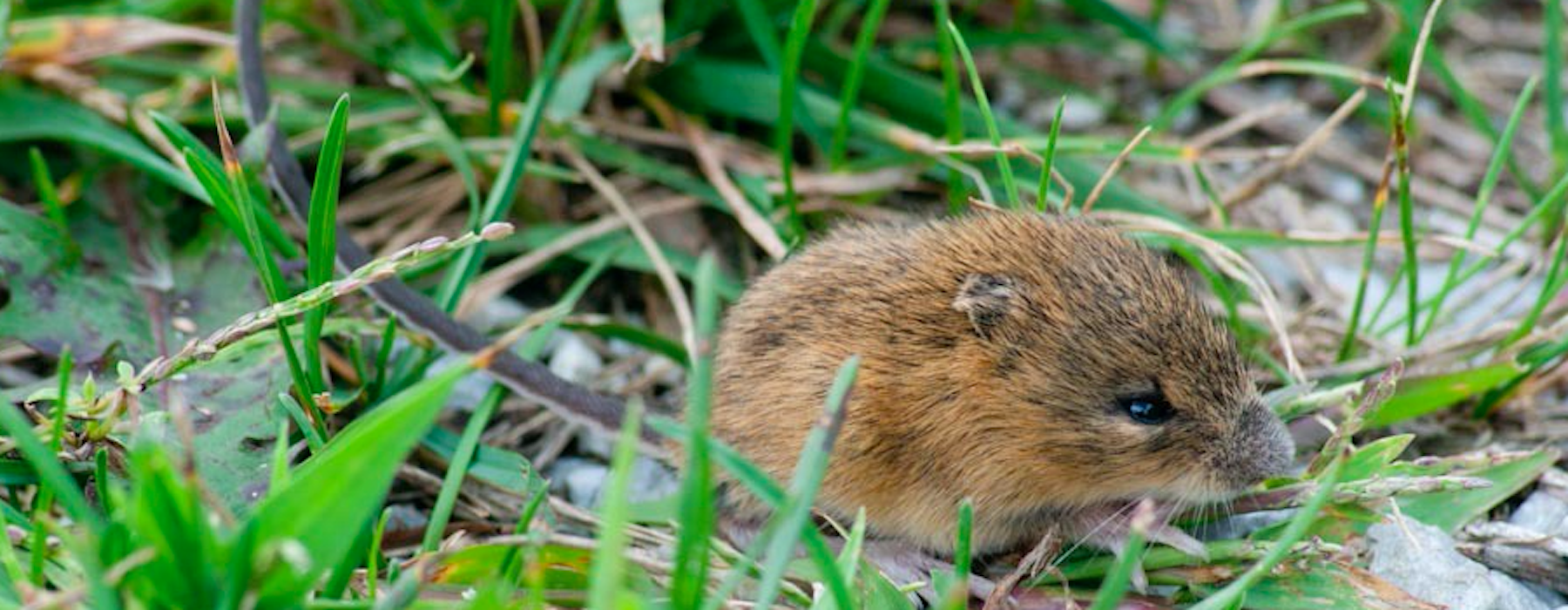Taxonomy
Order Rodentia
Family Dipodidae
Basic Description
Meadow jumping mice are small, slender mice with long tails and feet. They are duller in color than woodland jumping mice and do not have white-tipped tails. Adults have a band down their back that is olive to dark brown while the sides are yellowish brown. Underparts are white. The tail is longer than the body, sparsely haired, and is brown on top and yellow-white on the bottom. Meadow jumping mice have small, delicate forelimbs with 4 digits and longer hind limbs with 5 digits.
Total Length: 180-240 mm.
Mass: 12-30 g
Habitat
Meadow jumping mice prefer living in grasslands or other areas with some herbaceous cover, while they avoid heavily wooded areas. Higher populations are often found near water sources, such as streams or ponds.
Vermont Range
The meadow jumping mouse likely lives throughout the entire state, however little is known about their habitats here in Vermont.
Diet
Type: Herbivore (granivore)
Meadow jumping mice mainly feed on seeds. In the spring, after they emerge from hibernation, more of their diet consists of insects.
Reproduction
Breeding first occurs in the late spring. After a gestation period of about 18 days, a litter of 2-9 young are born. Young are weaned after about one month. Sexual maturity is reached when they are two months old. Typical life expectancy is one year.
Conservation Status
- Vermont: S5 (Secure)
- Global: G5 (Secure)
- IUCN Red List: Least Concern
More Information
Vermont Distribution
Banner Image: Photo 1359293, (c) Erika Mitchell, some rights reserved (CC BY-NC) / Cropped from original







